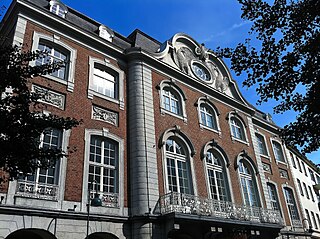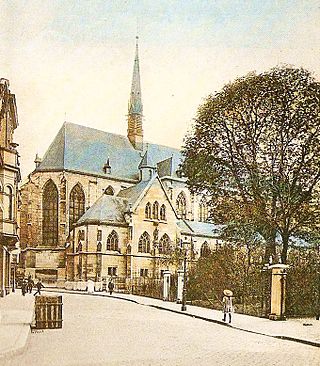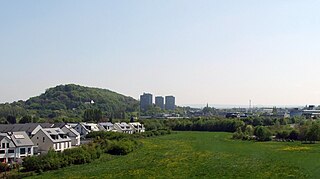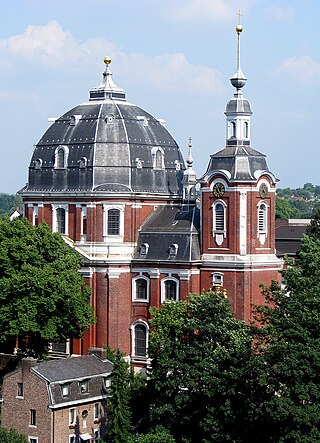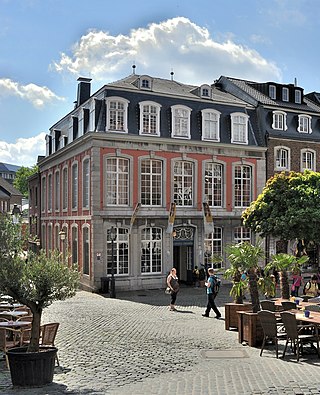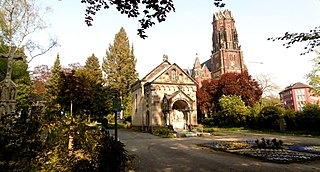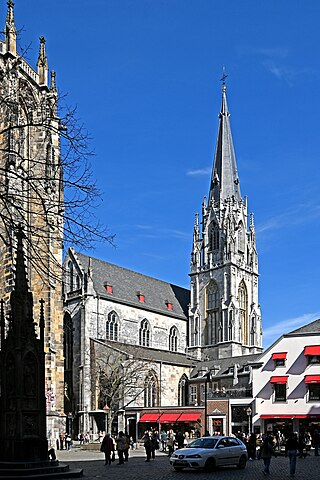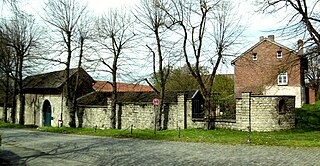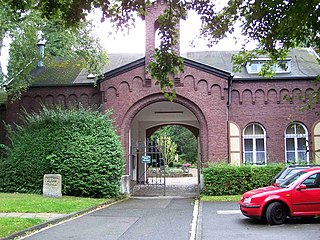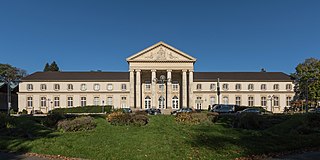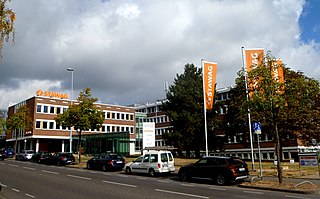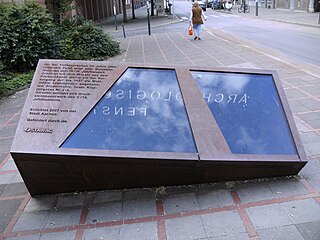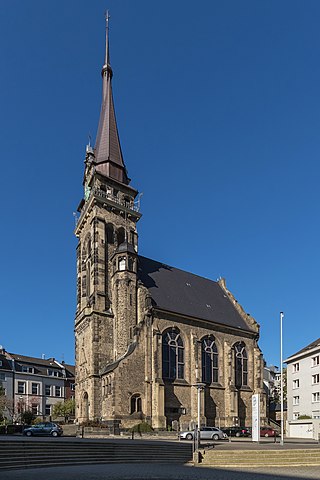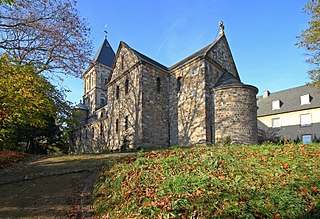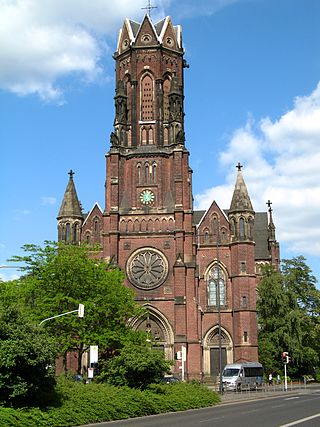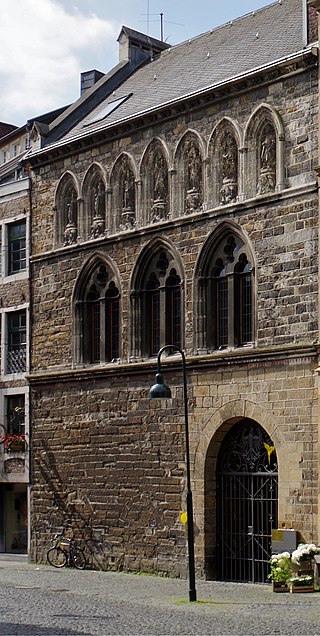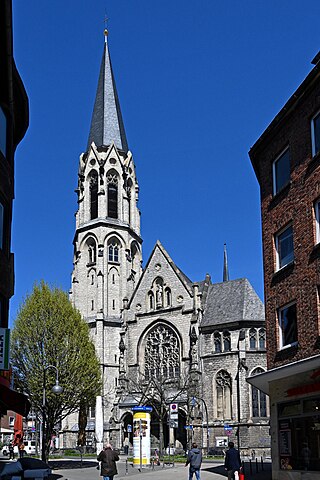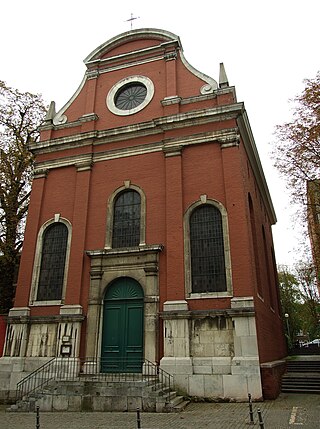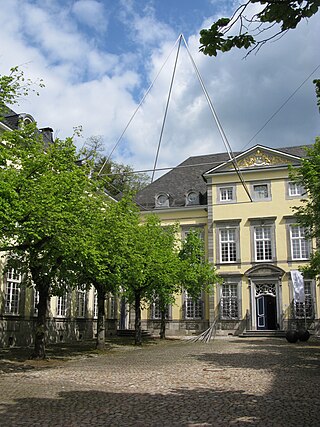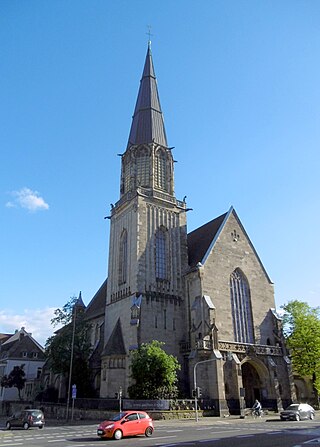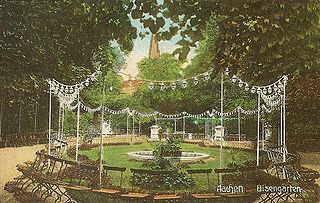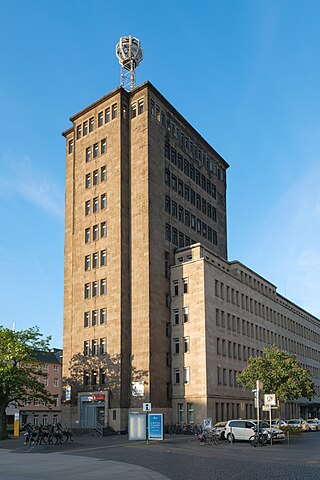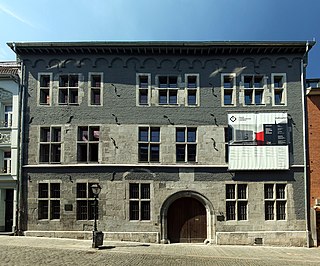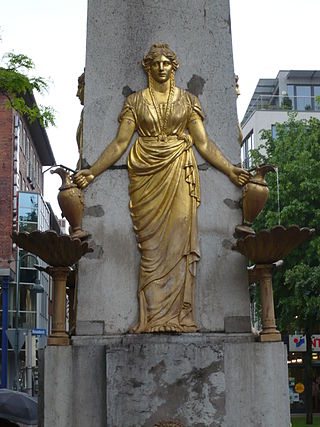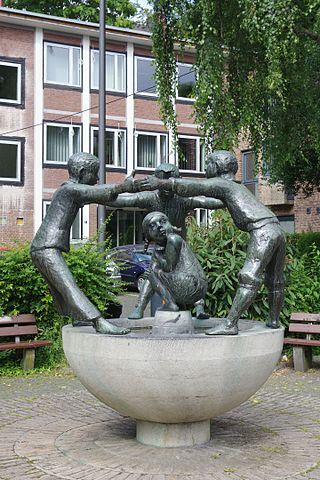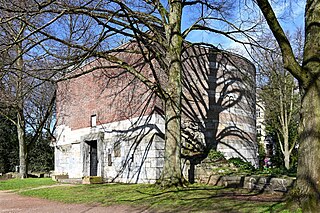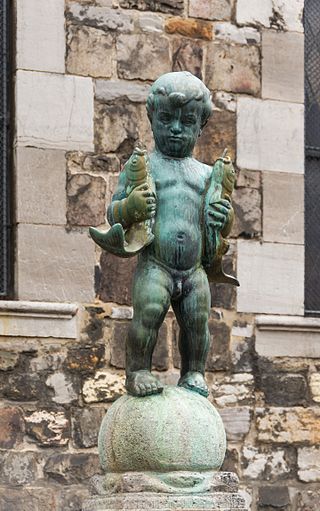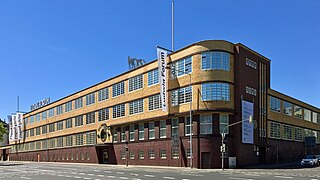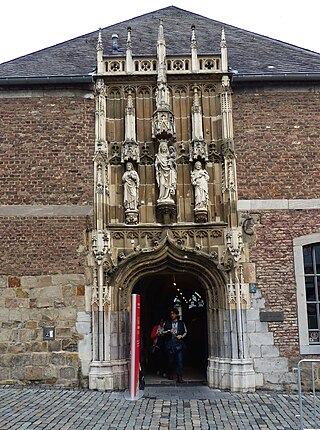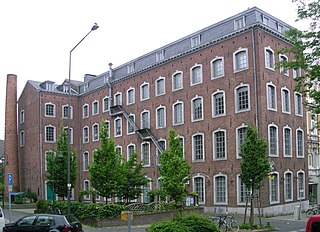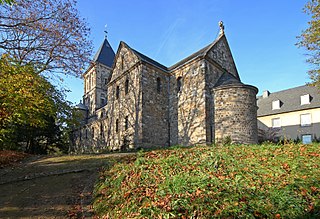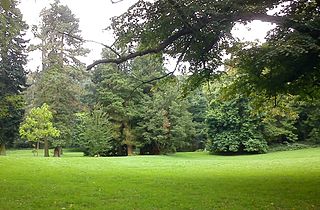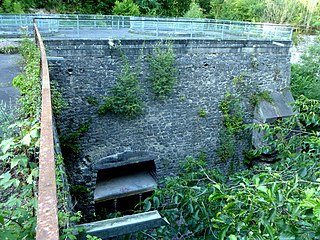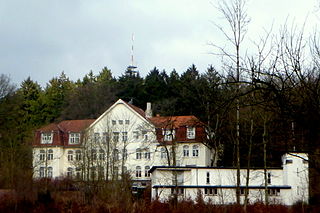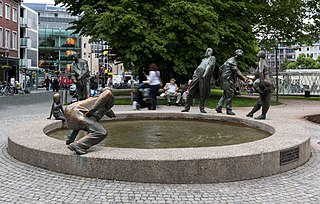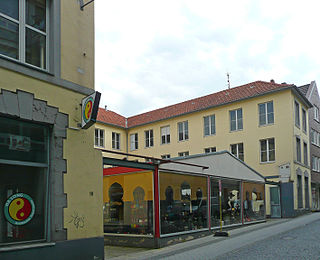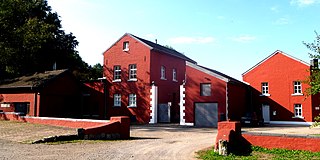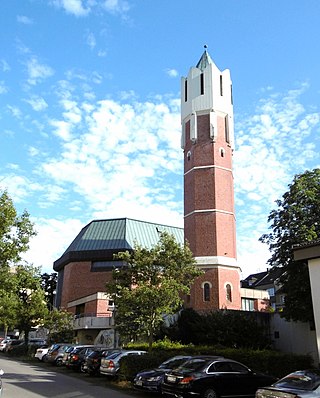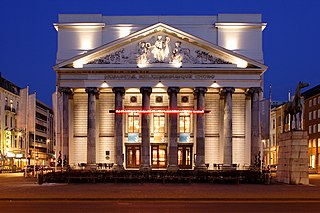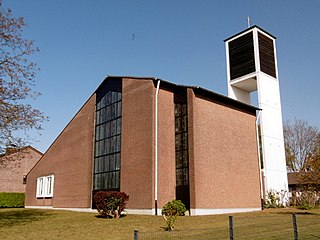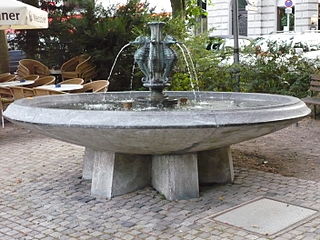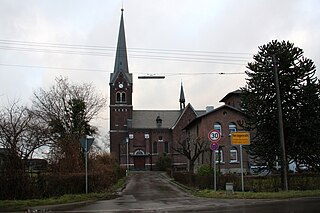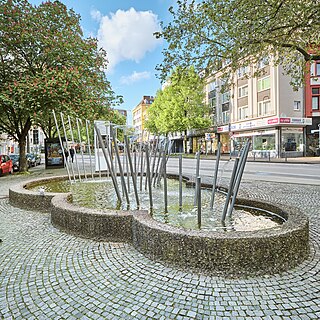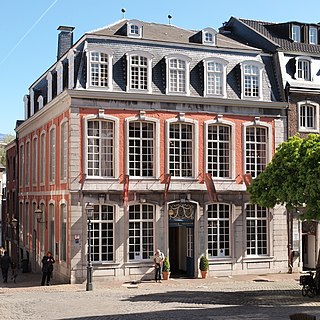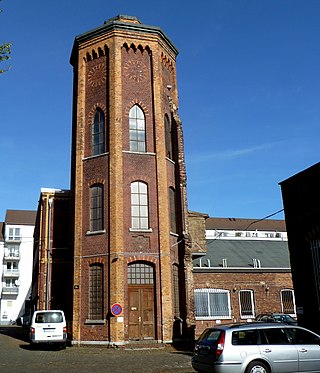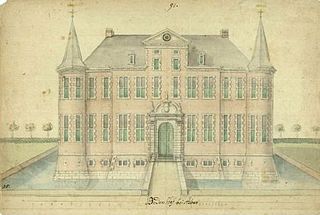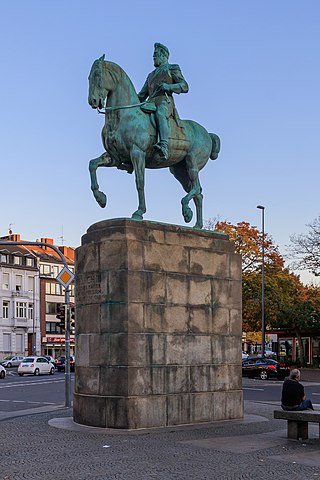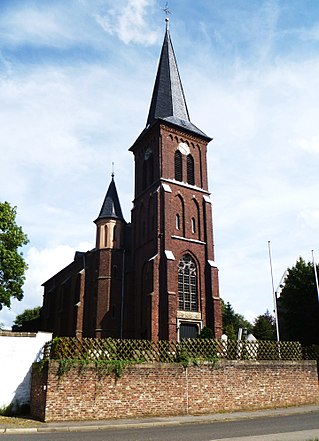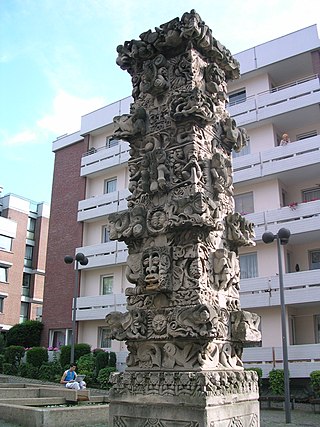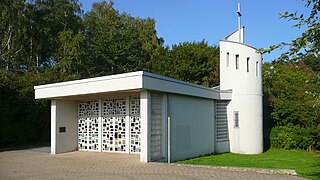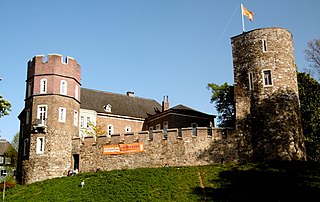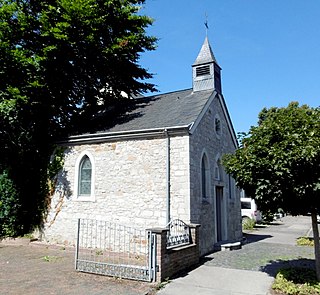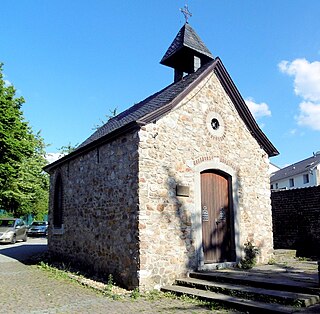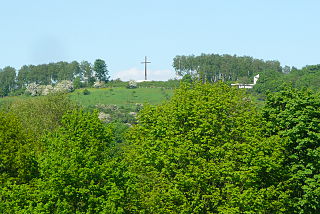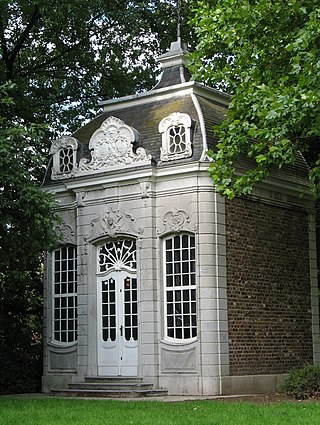100 Sights in Aachen, Germany (with Map and Images)
Legend
Premium Sights
Book tickets, guided tours and activities in Aachen.
Guided Free Walking Tours
Book free guided walking tours in Aachen.
Welcome to your journey through the most beautiful sights in Aachen, Germany! Whether you want to discover the city's historical treasures or experience its modern highlights, you'll find everything your heart desires here. Be inspired by our selection and plan your unforgettable adventure in Aachen. Dive into the diversity of this fascinating city and discover everything it has to offer.
Sightseeing Tours in AachenActivities in Aachen1. Marschiertor
The Marschiertor, until the 17th century also called Mies(ch)ierspforte or later also Berseter Tor or Burtscheider Tor, was the south gate of the outer Aachen city wall. It is one of the mightiest surviving city gates in Western Europe. Its construction began around 1257 and was probably completed shortly after 1300. With the Marschidetermined Gate, also known as the Burtscheid Middle Gate, it had a counterpart in the inner ring of walls, the so-called Barbarossa Wall, which had a total of ten gates.
2. Altes Kurhaus
The Old Kurhaus of Aachen was built between 1782 and 1786 according to designs by Jakob Couven at Komphausbadstraße 19 as a Neue Redoute and an extension to the neighboring Alte Redoute Aachen at number 11. In contrast to the Old Kurhaus, the Kurhaus at Monheimsallee 44, which was inaugurated in 1916, is referred to as the Neues Kurhaus Aachen, which also housed the Aachen Casino until 11 June 2015.
3. St. Nikolaus
The church of St. Nikolaus in Aachen is a former monastery church of the Franciscan order. It stands at the intersection of Großkölnstraße - Minoritenstraße in the immediate vicinity of the Barbarosamauer, the inner city wall of Aachen. A first church there is mentioned in 1005; It was an early church in which Nicholas of Myra was worshiped. Today's church was built in the first half of the 14th century. The building is under monument protection.
4. Lousberg
At 264 meters, the Lousberg is a prominent elevation on the northern edge of the historic center of Aachen, which was laid out as a forest and mountain park at the beginning of the 19th century according to plans by Maximilian Friedrich Weyhe. The origin of the name is not entirely clear. It could come from lousen, since the mountain offers an excellent panoramic view, or it could be traced back to Louis the Pious, the son of Charlemagne. Another explanation has to do with the Aachen dialect term lous, which means "clever".
5. Herz Jesu
The Catholic Sacred Heart Church, colloquially known as Frankenberg Cathedral or Öcher Sacre Coeur, was built between 1908 and 1910 as a neo-Romanesque stone basilica designed by the architect Josef Kleesattel in the Frankenberger Viertel in the Aachen district of Burtscheid. The mosaic above the altar is the second largest in the Diocese of Aachen after the one in Aachen Cathedral.
6. Villa Cassalette
The Villa Cassalette is a former residential building in Aachen, Wilhelmstraße 18, which was built in 1883–1888 as a city palace in the historicist style of the Neo-Mannerism according to a design by the Aachen architect Eduard Linse. The building now houses the Suermondt-Ludwig Museum and is a listed building.
7. St. Johann Baptist
The former parish church of St. Johann-Baptist in Burtscheid is a Roman Catholic church dedicated to John the Baptist and former abbey church of the imperial abbey of Burtscheid. Since 2010, it has been part of the "Catholic Parish of St. Gregory of Burtscheid", a large parish formed in the Diocese of Aachen as part of the municipal structural reform implemented in 2008, which is named after the founder of the abbey, Abbot Gregor von Burtscheid, and to which, in addition to St. Johann-Baptist, the former parishes of St. Michael-Burtscheid and St. Aposteln, St. Gregorius and Herz-Jesu belong.
8. Haus Monheim
Haus Monheim is a listed building in the old town of Aachen. It was a residential and commercial building of the Monheim family of pharmacists and is one of the surviving works of Jakob Couven in Aachen. Today it houses the Couven Museum and is registered as an architectural monument in the Aachen list of monuments.
9. Ostfriedhof
The Aachen East Cemetery is the oldest cemetery in the modern history of the city of Aachen, which was built in 1803 at the instigation of the French municipal government. It is located in the east of the city area and geographically belongs to the northern quarter. The East Cemetery was placed under monument protection on 6 December 1988 as one of the oldest examples of modern cemeteries.
10. St. Foillan
St. Foillan is one of the parish churches in Aachen, Germany. It is located in the pedestrian zone and is only separated from the cathedral by a narrow alley. It is the only church in the German-speaking world that bears the patronage of Foillan. This is considered an indication that the missionary work in the Aachen area took place from the west.
11. Aachener Tierpark Euregiozoo
The Aachen Zoo Euregiozoo is an 8.9-hectare zoo located between the districts of Forst and Beverau in Aachen's "Drimborner Wäldchen", which is named after the former family of the aldermen's mayors Hermann von Dremborn and Johann von Drimborn. The entrance is located in Obere Drimbornstraße.
12. Gut Melaten
The Melaten estate is a former estate in Aachen, Germany. The farm goes back to a medieval leprosarium, which was founded on the Via Regia leading to Maastricht. In the period until 1550, it served as a quarantine station for lepers and lepers. The name is derived from mal'ladre, the "disease of Lazarus". It is also known as the Aachen Leper House. The estate is an architectural monument, the site a geological and archaeological ground monument of the city of Aachen.
13. St. Adalbert
The Provost's Church of St. Adalbert in Aachen was the collegiate church of a collegiate monastery and was consecrated in 1005. This makes it the second oldest church in the city after Aachen Cathedral. St. Adalbert is located directly on today's Kaiserplatz and is dedicated to Adalbert of Prague, who was canonized in 999.
14. Heißbergfriedhof
The Heißberg Cemetery is a cemetery inaugurated in 1862 in the then independent town of Burtscheid, which was incorporated into a district of Aachen in 1897. It is located on the corner of Heißbergstraße and Kapellenstraße No. 2, diagonally opposite Burtscheid's Ferberpark. The complex is listed in its entirety.
15. Wylre'sches Haus
The Wylre'sche Haus in Aachen is a listed representative residential building at Jakobstraße 35. It takes its name from the forester, alderman and multiple mayor of the imperial city of Aachen, Johann Bertram von Wylre, who had it built in 1669 after the purchase of several plots of land. Since it was taken over by the Aachen branch of the Hoesch/Heusch family, it has also been referred to in literature and in the vernacular as Haus Heusch or Palais Heusch because of its furnishings.
16. Neues Kurhaus
The New Kurhaus in Aachen, built between 1914 and 1916, is a neoclassical building in Aachen, Germany. The Kurhaus is located on the edge of Aachen's Stadtgarten on Monheimsallee and has the location designation Monheimsallee 44. The building is a listed building.
17. Reiff-Museum
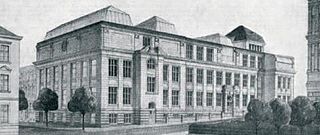
The Reiff Museum was a museum in Aachen, Germany. The museum was founded by Franz Reiff (1835–1902); because from the founding of RWTH Aachen University in 1870 as the "Royal Rhine-Westphalian Polytechnic School of Aachen", there was also a painting professorship, which was located in the Department of Architecture; the positions were held (successively): Franz Reiff, Alexander Frenz, August von Brandis, Hermann Haas. The collection of works of art served to train architects and art historians at the Polytechnic Technical University. Today, only part of the existing building has been preserved. The building refers to its original use via a cartouche with the inscription Reiff Museum. The original collection rooms on the 2nd floor have had a different use since the 1950s. The building houses the Faculty of Architecture at RWTH Aachen University. The collection has been stored in a basement depot since 2012 and cannot be visited.
18. Propsteikirche St. Kornelius
The Provost's Church of St. Cornelius in Kornelimünster, a district of Aachen, is a church building of the Roman Catholic Church in the Diocese of Aachen. The church is dedicated to St. Cornelius, who was pope from 251 to 253. Originally, it was the monastery church of the imperial abbey of Kornelimünster. Due to the relics of Christ kept in it, it became the destination of numerous pilgrimages, especially during the Kornelimünster pilgrimage to the shrine, which takes place every seven years. After secularization in the Napoleonic era, it became the parish church of the parish of Kornelimünster. In addition, it remained a pilgrimage church and the destination of the pilgrimage that takes place every seven years.
19. STAWAG Stadtwerke Aachen AG
STAWAG – Stadt- und Städteregionswerke Aachen AG is the municipal utility of the city of Aachen and offers services in the areas of gas, district heating, water and electricity. This includes supplying the population of Aachen with gas, water, electricity and heat as well as advising and providing customer service for the use of energy in households and industry. The group is a subsidiary of Energieversorgungs- und Verkehrsgesellschaft Aachen mbH (E.V.A.), which also has other subsidiaries.
20. Archäologisches Fenster
The Archaeological Windows in Aachen are showcases or viewing windows in the public space of Aachen's old town or in buildings that are at least temporarily open to the public or visible, in which historically important archaeological finds from Aachen's city history can be viewed at the place where they were found.
21. Friedhof Güldenplan
The city garden Aachen with the central and 193 m above sea level. NHN Hohen Wingertsberg is a landscape architecturally designed urban park in Aachen. He consists of the hospital garden, which was transformed into a spa park from 1916 in 1852, as well as the Farwickpark, which was followed north and, which has been released since 1945, and the former Güldenplan, which was incorporated after 1945. The city garden has a total area of around 2.3 ha and is located in the area between Monheimsallee, Jülich Strasse, Robensstraße, Passstraße and Rolandstrasse.
22. Dreifaltigkeitskirche
The Holy Trinity Church is the largest Protestant church in Aachen. It was built between 1897 and 1899 on the historic city border between Burtscheid, which was independent until 1897, and the city of Aachen and is a listed building. In 2006, it was abandoned as a parish church in the course of the redivision of the parish districts and since 2015 has served as a youth church of the Evangelical Church of Aachen, which belongs to the Aachen church district of the Evangelical Church in the Rhineland.
23. Schwimmhalle Elisabethstraße
The Elisabethhalle is a municipal indoor swimming pool in Aachen, Germany, located at Elisabethstraße 10, not far from Aachen Cathedral. It was built from 1908 to 1911 in Art Nouveau style for a total of 900,000 marks and opened on 17 July 1911. The design came from the Aachen city architect Joseph Laurent. The Elisabethhalle is one of the few surviving indoor swimming pools from the Art Nouveau era that are still in operation today.
24. Salvatorberg
With a height of 229 meters, the Salvatorberg is the middle of Aachen's three "local mountains". The highest of these witness mountains is the Lousberg, the lowest the Wingertsberg. The Salvator Hill got its name after the Salvator Chapel built on it in the 9th century and the "Salvator Monastery" of the same name, which was later also founded there, both of which were dedicated to Jesus Christ in his capacity as Salvator Mundi.
25. Grabeskirche St. Josef
St. Josef in Aachen is a former Catholic parish church, which is now used as a columbarium for urn burials under the name "Church of the Holy Sepulchre", also because the neighboring Aachen East Cemetery has reached the limits of its capacity.
26. Wehrhafter Schmied
Wehrhafter Schmied is a fountain monument in Aachen designed in 1909 by the Aachen sculptor Carl Burger and created by the Düsseldorf ore foundry Bernhard Förster. It shows the figure of a blacksmith who, according to the legend The Blacksmith of Aachen, is said to have slain Count Wilhelm IV of Jülich.
27. Grashaus
The building at the fish market in Aachen, known as the Grashaus, is not only one of the oldest houses in the city, but also of historical importance as the first Aachen town hall. It was completed in 1267, but probably stands on even older foundation walls from possibly Carolingian times. The Grashaus owes its name to the grass, a medieval village green where executions as well as folk festivals and supposedly the funerals of the executed took place.
28. Pfarrkirche St. Fronleichnam
The Aachen Church of St. Corpus Christi is the parish church of the Catholic parish of St. Josef and St. Corpus Christi and the most famous and at the same time best documented church building by Rudolf Schwarz. The sacred building, built in 1929/30, was originally the parish church of the parish of St. Corpus Christi, which was merged with the parish of St. Josef in 2005. The former parish church of St. Josef has been used as a columbarium for urn burials since November 2006 under the name Church of the Holy Sepulchre.
29. Centre Charlemagne
The Centre Charlemagne – Neues Stadtmuseum Aachen is the local history museum of the city of Aachen. It received its French name after Charlemagne, the best-known and most important historical figure in Aachen; French was chosen instead of German because of the prominent position of the French language in the Eurégion Meuse-Rhin and EU.
30. Heilig-Kreuz
Heilig Kreuz is a church in Aachen, Germany. It was consecrated in 1902 and is located in the Pontviertel, a northern area of the city on Pontstraße near the former city gate Ponttor. This means that it is in the immediate vicinity of the buildings of the RWTH Aachen University.
31. St. Peter
St. Peter's Church is a church in Aachen, Germany, named after St. Peter. It is located in the city center in the immediate vicinity of the bus station. The church is one of the oldest monuments in Aachen.
32. Varnenum
The so-called Varnenum is the excavation site of a Gallo-Roman temple district near Kornelimünster. It is located about 300 meters east of St. Stephen's Church on a plateau called "Schildchen". It is a Roman temple district, whose foundation and first building period is set in the time around the birth of Christ. The first documented excavations were carried out on the site in 1907, 1911, 1923 and 1924. A further excavation carried out in 1986 and 1987 was preceded by magnetometer prospections by the RAB and a phosphate analytical soil investigation, the drilling grid area of which covered approx. 250,000 m² and thus extended very extensively around the old excavation area.
33. Theresienkirche
The Theresienkirche is a Catholic city church in Aachen, Germany. It is located in the northeastern area of the city center and borders on the building areas of the RWTH Aachen University. It is owned by the state of North Rhine-Westphalia as a special property.
34. kunsthaus nrw
The Kunsthaus NRW Kornelimünster is a programme of the "Kunsthaus NRW Gesellschaft zur Förderung der Bildenden Kunst", an institution of the Ministry of Culture and Science NRW. Since 1976, it has been based in the former imperial abbey of Kornelimünster in Aachen-Kornelimünster. The Kunsthaus documents and communicates artistic creation in North Rhine-Westphalia in exhibitions as well as through publications, events and educational offers and illustrates the change in artistic forms of expression from the beginning of modern art around 1912 to the present day. Other programs of the non-profit organization are the "Kunsthaus NRW Artothek", the "State Office for Fine Arts NRW" and the research project "Art in State Ownership".
Wikipedia: Kunsthaus Nordrhein-Westfalen Kornelimünster (DE), Website
35. Lemierser Ölmühle
The list of historic mills in Aachen offers an overview of the most famous former water mills on the banks of the Aachen streams on the present-day territory of the city of Aachen. More than 70 mills could be proven on the basis of the sources and substantiated with data, although there were also other mills that have been historically forgotten or about which there is no information. The proven Aachen mills had once served, among other things, as grain, grist or oil mills as well as copper, grinding, fulling or dyewood mills and most of them had an overshot water wheel. From the early modern period onwards, they formed the basis for Aachen's economic rise, especially in the area of the cloth and needle industry in the 18th and 19th centuries, as evidenced, for example, by the history of the cloth industry in Aachen.
36. Sankt Gregorius
The Church of St. Gregorius in Aachen-Steinebrück is a church of the "Catholic Parish of St. Gregory of Burtscheid", which was established on 1 January 2010 and is also referred to administratively as the "Community of Communities" (GdG) Aachen-Burtscheid. The church was built in the 1960s according to plans by the Cologne architect Stefan Leuer as the parish church of the Roman Catholic parish of St. Gregorius and consecrated on June 16, 1967 in honor of the canonized Pope Gregory the Great. In 2018, it was placed under monument protection and its crypt was converted into the Church of the Holy Sepulchre, the third of its kind in Aachen.
Wikipedia: St. Gregorius (Aachen-Burtscheid) (DE), Website, Service_times
37. Aula Carolina
The Aula Carolina is a listed building that is available for both school gatherings and public cultural events. It is located at the southern end of Pontstraße in the center of Aachen. The auditorium belonging to the eponymous Kaiser-Karls-Gymnasium is the former church of St. Katharina of the former monastery of the Augustinian hermits.
38. Sankt Hubertus
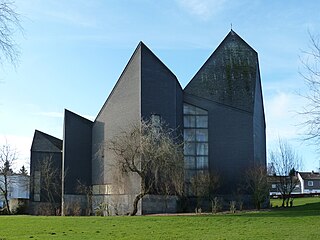
The Roman Catholic Church of St. Hubert is located in the Aachen district of Verlautenheide in the district of Haaren and belongs to the parish of Christ our Brother. The current church building dates back to 1954. The church is consecrated in honour of St. Hubertus of Liège.
39. Offene Tür St. Jakob
The Aachen Eye Hospital, also known as the Ophthalmology Institute in the Rhineland, was a hospital in Aachen, Stephanstraße 16–20, built in 1887/88 according to the design of the architect Eduard Linse, which is now used as a youth home. The historicist building is a listed building.
40. DIGITAL CHURCH
The Church of St. Elisabeth was built in 1907 as a Roman Catholic church in Aachen, Jülicher Straße 68. On April 24, 2016, the church was profaned, before the digitalHUB Aachen e.V. opened Germany's first coworking space in a nave here in July 2017. In addition, the premises can be rented for open cultural or private events. The building is a listed building.
41. Elisengarten
The Elisengarten is a small park in the city center of Aachen on the rear side of the Elisenbrunnen. The Elisengarten was laid out between 1852 and 1854 according to plans by the Prussian master gardener Peter Joseph Lenné.
42. Verwaltungsgebäude Bahnhofplatz
Haus Grenzwacht is a listed high-rise building in Aachen, Germany, which serves as an administrative building for the Aachen city administration. It was created from the shell of the Lochnerhaus, which the entrepreneur Rudolf Lochner originally wanted to build on this site and which was considered Germany's best-known investment ruin at the time. On the roof of the building is the Aachen weather column, visible from afar.
43. Großes Haus von Aachen
The Great House of Aachen is one of the oldest surviving residential buildings in the city of Aachen. Its significance as an architectural monument lies in the fact that it survived the Aachen city fire of 1656 largely undamaged. The building now houses the International Newspaper Museum.
44. Hotmannspief
The Hotmannspief, also Hotmannspiif, is a fountain monument at the historic fountain site in Aachen, which was erected in 1825 according to designs by city architect Adam Franz Friedrich Leydel in the form of an obelisk and provided with figures in 1830.
45. Hühnerdieb
Hühnerdieb is a fountain monument by the Berlin sculptor Hermann Joachim Pagels, which was unveiled at Christmas 1913 at the Aachen Hühnermarkt. It consists of the bronze figure of a chicken thief, which was mounted on a fountain bowl made of shell limestone. The figure shows the moment when the thief is astonished to discover that instead of the chicken, he has stolen a rooster, which crows and thus betrays him. However, the scene embodied in the figure is without historical precedent.
46. Barockfabrik
The Barockfabrik is a cultural centre under the municipal sponsorship of the city of Aachen. The state-approved vocational school for: acting • directing • musical, Aachen Theatre School, the Öcher Schängchen City Puppet Theatre, the dance workshop Art bewegt and Café Couleur are located here.
47. Gartenhaus Mantels
The Mantels Garden House, also known as the Kerstenscher Pavilion, is a Baroque garden pavilion designed by the Aachen master builder Johann Joseph Couven, today located on the southeastern slope of the Lousberg. The garden house is one of Couven's three surviving garden houses in Aachen, which also include the Nuellens garden house and the Pastor garden house, which was demolished in 1888.
48. Türelüre-Lißje-Brunnen
Türelüre-Lißje, also Turelure-Lieschen or Türelüre-Loetche, is the name of a legendary Aachen figure, to whom a fountain monument by the Aachen sculptor Hubert Löneke, which has stood at the entrance to Klappergasse since 19 November 1967, is dedicated.
49. Ehrenmal
The Marienturm was a defensive tower of the outer city wall of the city of Aachen, which was built between 1300 and 1350. It is one of the few surviving towers of the former city fortifications and is one of the architectural monuments of the city of Aachen.
50. Fischpüddelchen
Fischpüddelchen is a fountain monument originally erected in 1911 by Hugo Lederer in front of the baptistery of Aachen Cathedral at the fish market in Aachen. The figure was melted down during the Second World War and recreated in 1954 according to the destroyed model of Heinrich-Clemens Dick. The fountain is a modified copy of the Fischerbuberl fountain by the sculptor Ignatius Taschner, built in 1910 and now standing on Wiener Platz in Munich.
51. Ludwig Forum für Internationale Kunst
The Ludwig Forum for International Art is a museum for modern art in Aachen. It is based on the Ludwig Collection, which was brought together by the Aachen collector couple Irene and Peter Ludwig, and is supported by the Peter and Irene Ludwig Foundation.
Wikipedia: Ludwig Forum für Internationale Kunst (EN), Website
52. Domschatzkammer
The Aachen Cathedral Treasury is a museum of the Roman Catholic Diocese of Aachen under the control of the cathedral chapter, which houses one of the most important collections of medieval church artworks in Europe. In 1978, the Aachen Cathedral Treasury, along with Aachen Cathedral, was the first monument on German soil to be entered in the List of UNESCO World Heritage Sites. The treasury contains works from Late Antique, Carolingian, Ottonian, Staufen, and Gothic times. The exhibits are displayed in premises connected to the cathedral cloisters.
53. Kriegerdenkmal
The Eilendorf War Memorial on Marienstraße in the Aachen district of Eilendorf is a memorial to the citizens of the village who died in the First World War, built in 1927 according to plans by the sculptor Fritz Neumann.
54. Kurpark Burtscheid
The Kurpark Burtscheid is a green space in the Aachen district of Burtscheid that was laid out at the end of the 18th century. The Burtscheid Kurpark is the oldest park in Aachen and has been changed several times in its size and use over time. Until the middle of the 20th century, more than 15 artesian thermal springs still sprang up within the spa park. There are several listed buildings on the park grounds, such as the translocated Nuellens Pavilion, the Fürstenbad and the former Neubad.
55. THEATERSCHULE AACHEN E.V.
The Aachen Theatre School for Drama • Direction • Musical is a supplementary school for theatre and film. It is based in the rooms of the Barockfabrik, a cultural center sponsored by the city of Aachen.
56. Salvatorkirche
St. Salvator on the Salvatorberg in Aachen is a church building of the Roman Catholic Church. The current building was completed in 1886. Predecessor buildings were first mentioned around the year 840 and dedicated to Jesus Christ in his capacity as Salvator Mundi by 870 at the latest.
57. Von-Halfern-Park
The Von-Halfern-Park is a park and arboretum in the southwest of Aachen on the Lütticher Straße, in the direction of Kelmis/Belgium, located directly and seamlessly on the northern edge of the Aachen city forest. It was laid out in the style of an English landscape garden and contains trees and plants up to 200 years old, including from North America, Europe and Asia.
58. Burtscheider Viadukt
The Burtscheid Viaduct was built between 1838 and 1840 as the first large German railway viaduct by the Rhenish Railway Company and is one of the oldest railway bridges still in use in Germany. It is located in front of Aachen Central Station on the Cologne–Aachen railway.
59. Puppenbrunnen
The Puppet Fountain is located in Aachen, North Rhine-Westphalia, on Krämerstraße, the connection between the cathedral and the town hall. It was donated by the Aachener Bank and created in 1975 by the Aachen sculptor Bonifatius Stirnberg.
60. Kalköfen
The Walheim/Kornelimünster lime kiln plants are a series of historic kilns, most of which are located in the Kornelimünster/Walheim district south of Aachen. They were used to extract burnt lime from limestone and were built between 1870 and 1924 and partially supplemented and modernised after the Second World War. However, they had to be closed as early as the mid-1950s, as structural changes in the lime industry meant that the operation of smaller individual kilns was no longer profitable.
61. Marktbrunnen
The Burtscheid Thermal Fountain is located in the Aachen district of Burtscheid, North Rhine-Westphalia at the Burtscheider Markt and is therefore also known as the Market Fountain. Since it is a public fountain, thermal water can be taken there free of charge.
62. Sankt Germanus
The Catholic parish church of St. Germanus is a listed church building in Haaren, a district of the city of Aachen in North Rhine-Westphalia. Since 2009, it has belonged to the parish of Christ our brother of the Catholic parish of Aachen-Nord and is dedicated to Germanus of Auxerre.
63. Landgraben
The Aachener Landgraben is the name for the fortification along the almost 70 km long border of the former Aachen Empire. Individual sections can already be documented for the 14th and 15th centuries, but it was not until the beginning of the 17th century that the construction of the Landwehr was completed throughout and on 11 April 1611 by Albrecht VII of Habsburg, the acting regent of the Spanish Netherlands in Brussels, contractually legitimised with the aldermen and the city council in Aachen.
64. Vinzenzbrunnen
The Vinzenz Fountain on Aachen's Münsterplatz is a fountain consecrated in 1847, which was created by the Aachen sculptors Wilhelm Josef Wings and Gottfried Götting according to a design by the then Aachen city architect Friedrich Joseph Ark.
65. Sandkaulpark

The Sandkaulpark is the second largest park within the Aachen Alleenring after the Elisengarten. It was one of the few inner-city areas to be laid out in Aachen after the war by the so-called alignment line straightening. The residential buildings at the time, which were largely bomb-damaged, were demolished. The park is located within the monument area of protection zone B.
66. Haus Löwenstein
The building known as Haus Löwenstein at Markt No. 41, on the corner of Pontstraße in Aachen, was built parallel to Aachen's town hall and completed around 1344. Along with the cathedral and town hall, it is one of the few Gothic buildings that survived the great city fire of 1656.
67. Kapelle St. Mariä Geburt | Maria im Tann
Maria im Tann is the centre for child, youth and family welfare and youth vocational assistance of the city of Aachen on the outskirts of the Preuswald district. It has its origins in the lung sanatorium for adults, which has existed since 1909 and its expansion to include a children's home in 1916, and has been managed since 1995 by the "Catholic Education Association for the Rhine Province" and the affiliated "Betriebsführungsgesellschaft mbH". The centre described above is a member of the "Working Group of Catholic Institutions and Services of Educational Assistance in the Diocese of Aachen" of the Aachen branch of the German Caritas Association and is currently home to around 220 children and young people. Around 110 employees are employed.
68. Kreislauf des Geldes
The Cycle of Money is a fountain in Aachen created in 1976 by Karl-Henning Seemann. It is located in Hartmannstraße at the end of the Elisengarten. The fountain, which is financed by the Sparkasse Aachen, is usually called Geldbrunnen in short. In 2007, the fountain figures were renovated.
69. St. Paul
The Church of St. Paul in Aachen is a former Dominican church and later a Roman Catholic parish church. It was profaned in 2009 and has housed the Diocesan Archive of the Diocese of Aachen since 2018. The outer building, destroyed and rebuilt several times, preserves the character of the Gothic mendicant order church. The interior has been modernly redesigned.
70. Londoner Hof
The former London Court was a representative three-winged city villa from the 18th century built by Laurenz Mefferdatis at Kleinkölnstraße 18 in Aachen's city centre, whose actual origins lie in the 15th century. Of the current commercial building standing there, only the ground floor original from the time of Mefferdatis and the approx. 1700 m² floor plan have been preserved, whereupon the building was placed under monument protection in 1977.
71. Komericher Mühle
The Komericher Mühle is a historic mill in the Aachen district of Brand, which has been used by several owners in various functions since its first mention in the 16th century. It is one of former 21 mills in the Indetal nature reserve and is located on Komericher Weg No. 42/44. It currently consists of the old Komerich farmstead, built around 1800, and a building complex for the operation of the mill from the period between 1885 and 1926, all of which are listed as industrial monuments.
72. St. Marien
St. Mary's Church is a Roman Catholic branch church in the south of Aachen's city center in the immediate vicinity of the main train station. Since 2010, the church has belonged to the large parish of Franziska von Aachen.
73. Theater Aachen
Theater Aachen is a theatre in Aachen, Germany. It is the principal venue in that city for operas, musical theatre and plays. It is the home of the Sinfonieorchester Aachen. The original project was by Johann Peter Cremer, later altered by Karl Friedrich Schinkel. Construction on the original theatre began in 1822 and it opened on 15 May 1825. A bomb attack on 14 July 1943 destroyed the first theatre, and the current structure was inaugurated on 23 December 1951 with a performance of Richard Wagner's Die Meistersinger von Nürnberg.
74. St. Michael (Dimitrios)
.jpg)
St. Michael's is a church in Aachen, Germany. It was built as a church of the Aachen Jesuit Collegium in 1628, later it was a Catholic parish church and is now a church of the Greek Orthodox Metropolis of Germany. The official name today is Church of Archangel Michael – St Dimitrios.
75. Alexianerkloster Aachen
The Alexian Monastery in Aachen is the mother house of the Alexian Brothers on the Alexianergraben in Aachen, the first documented mention of which dates back to 1391. The current building complex there consists of the convent building (Clemens Building) with the St. Alexius Church and the rear wings of the adjoining Alexian Hospital (Quirinus Building). The Clemens Building with the church was rebuilt in 1929 according to plans by the Düsseldorf architect Wilhelm Pauen (1865–1949) and was placed under monument protection in 1980.
76. Versöhnungskirche
The Church of Reconciliation is a Protestant church in Aachen-Eilendorf, Germany. It forms the parish district of the Church of Reconciliation within the Evangelical Parish of Aachen, which belongs to the Aachen church district of the Evangelical Church in the Rhineland.
77. Vierecksturm
Berensberg Castle, also known as Haus Berensberg and Gut Berensberg, is a former aristocratic residence in the Herzogenrath district of Kohlscheid-Berensberg. Until the beginning of the 15th century, the property was owned as an Electoral Cologne fief by a lower noble family of the same name. Then it came to the von Harff family, who had the moated castle, which had been damaged in the Eighty Years' War, rebuilt as a four-winged complex at the turn of the 16th and 17th centuries. Through the marriage of a Harff daughter, the complex came to the von Reuschenberg family, under which a new manor house was built in 1714. Other owners were the Peltzer and Cockerill families. Since 1910, Berensberg Castle has belonged to the city of Aachen.
78. Henger Herrjotts Fott
The crucifixion group Henger Herrjotts Fott (Behind Herrgotts Gesäß), actually Osen Herrjotts Hazz (Our Lord's Heart), is a bronze sculpture by Bonifatius Stirnberg. It was erected on 27 August 1989 in Aachen as a replacement for a stone crucifixion group that had been lost in 1941 in the turmoil of the Second World War. It is located on a square between Wirichsbongardstraße and Schildstraße, which in 2003 was given the official postal address "Henger Herrjotts Fott" in allusion to the surrounding district of the same name.
79. Haus Matthéy
Das Haus Matthéy ist ein unter Denkmalschutz stehendes Gebäude in der Theaterstraße in Aachen mit der Hausnummer 67. Das ursprüngliche Gebäude wurde 1834 von Adam Franz Friedrich Leydel im Auftrag des Tuchfabrikanten Heinrich Anton Deusner (1787–1870), eines Sohnes des aus dem Raum Frankfurt am Main stammenden und in Aachen tätigen Tuchfabrikanten und Politikers Christian Friedrich Deusner (1756–1844), als repräsentative Stadtvilla im klassizistischen Stil erbaut. Von dieser existiert lediglich die heute original eingearbeitete Fassade. Das Haus trägt seinen Namen nach dem letzten Privatbesitzer, dem Textilkaufmann und Kunstsammler Teo Matthéy (1901–1989). Das viele Jahre weitgehend leerstehende Gebäude wurde im Juni 2019 durch Erbbaurecht von dem Ehepaar Volker und Andera Gadeib übernommen. Von 2019 bis Juni 2022 wurde das Stadtpalais aufwändig denkmalgerecht saniert und zum Sitz der Firma Dialego AG umgebaut.
80. Müschpark
The Müschpark is an approximately 11-hectare park that was laid out between 1803 and 1814 on behalf of the Secretary General of the French administration, Wilhelm Körfgen, directly at the northern foot of the Lousberg in Aachen as Ferme Ornée. The park takes its name from the Müsch estate located in the same area, which is directly adjacent to today's monastery of St. Raphael in the Soers and is located in the Aachen landscape conservation area. It was privately owned until 2005 and was then taken over by the city of Aachen, which made it available to the population as a public facility. The entrances are located at the former main gate at the corner of Purweider Weg/Strüver Weg and in the area of Buchenallee on the Lousberg.
81. Seepferdchenbrunnen
The Seepferdchenbrunnen is a fountain monument in Burtscheid according to a design by the Aachen architect Gerhard Thomalla, which was originally erected in 1956 in the rotunda of the Elisenbrunnen after its rebuilding in 1952/53. The bronze figures of the six seahorses standing upright around the fountain column were created by the Aachen sculptor Josef "Jupp" Zeller. The fountain bowl, created from a dark block of marble, comes from the stonemason's workshop of Ewald Mies, Ludwig Mies van der Rohe's brother. It has a diameter of 3.30 meters. After the fountain had been removed from the Elisenbrunnen, it was erected in 1971 at its current location on Burtscheider Kapellenstraße.
82. St. Matthias
St. Matthias is a Catholic branch church in Berensberg, a district in the Herzogenrath district of Kohlscheid. It belongs to the parish of Christ our Peace, which also includes the main church of St. Katharina in Kohlscheid, St. Barbara in Kohlscheid-Pannesheide, St. Mariä Heimsuchung in Kohlscheid-Kämpchen and St. Mariä Verkündigung in Kohlscheid-Bank. The church has been a listed building since 1985.
83. Röhrenbrunnen
The Röhrenbrunnen is a fountain in Aachen, Germany. It is located on a triangular square between Komphausbadstraße and Kurhausstraße north of the Old Kurhaus. The fountain was created in 1971 by the sculptor Heinz Tobolla.
84. Roskapellchen
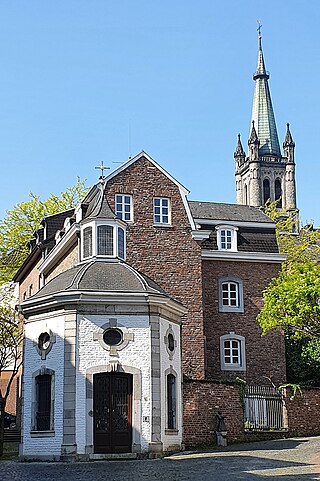
The Roska Chapel is a listed chapel building in Aachen not far from the parish of St. Jakob and is used for the veneration of the Mother of God. It was built in 1758/1759 in the Baroque style as a replacement for a previously free-standing wayside shrine, into which a figure of the Virgin Mary from the early 16th century had been integrated. The chapel building is attributed in many sources to the Aachen master builder Laurenz Mefferdatis, but the cathedral master builder Joseph Buchkremer lists it as the work of Johann Joseph Couven. The "Roskapellchen" owes its name to the surrounding residential district, although it is not clear whether the name "Ros/Rues" is the name "via rotta" from Roman times or a reference to a nearby flax roast.
85. Zum Güldnen Verken
The Marianneninstitut was a maternity ward for poor women who had recently given birth in Aachen and the first of its kind in Prussia. The institute was founded in 1830 by the Aachen gynecologist and obstetrician Vitus Jakob Metz (1792–1866) and recorded more than 40,000 births by the time it closed in 1959. It was named after Princess Marianne of Prussia, the wife of Prince William of Prussia.
86. Jüdischer Friedhof Kornelimünster
The Jewish cemetery Kornelimünster is located in the Kornelimünster district of the city of Aachen in the Aachen city region (North Rhine-Westphalia). The 584-square-metre cemetery is located on Schildchenweg, opposite the municipal cemetery and near the church of St. Stephanus.
87. Gut Diepenbenden
The Diepenbenden estate is a country estate first built in 1616 and newly built around 1820 with a landscape garden in the Aachen district of Steinebrück, which was subsequently established around 1829. In its eventful history, it served as a mill, pottery, chemical factory and was the birthplace of the painter Alfred Rethel. The estate and the landscape garden are under monument protection.
88. Couven-Museum
The Couven Museum is a museum in the city centre of Aachen, western Germany. Since 1958, it is housed in the Monheim house, a 17th-century pharmacy, that was redesigned by the architect Jakob Couven in 1786. Several period rooms in Directoire, Empire and Biedermeier styles are on display, as well as the historic pharmacy, kitchen and a collection of faience tiles.
89. Intzeturm
The Tuchfabrik Aachen AG was one of the larger textile companies in Aachen. It was founded in 1859 by the entrepreneurs Alfred Ritz and Conrad Vogel in Aachen, initially under the name "Ritz & Vogel", and in 1873 it was transferred to a newly built factory on Charlottenstraße on the banks of the Beverbach in the Frankenberg district, which at that time still belonged to the neighbouring town of Burtscheid, according to plans by Otto Intze. In 1887, the complex was taken over by the manufacturers Siegmund Sternau and Albert Süskind, who contributed their cloth factory "Süskind & Sternau", founded in the 1870s, and transformed the new entire company into "Tuchfabrik Aachen AG" in 1897.
90. Sankt Maria Schmerzhafte Mutter
St. Maria Schmerze Mutter is the Roman Catholic parish church in the district of Hahn in the district of Kornelimünster/Walheim in the city of Aachen in North Rhine-Westphalia, Germany. The parish includes the subsidiary parish of Friesenrath with the chapel of St. Bernhard.
91. Gut Bodenhof
The Bodenhof estate, also known as Bodenhof for short, was a manor house with a representative manor house south of the then city of Aachen on the road to Eupen. Until the 17th century, the estate was also known as Laboenhof. All that remains of the estate today is the former main portal, a few wall bases and an arched bridge. These remains are listed as historical monuments.
92. Denkmal Kaiser Friedrich III.
The Kaiser Friedrich Monument in Aachen stands on Kaiserplatz. Erected in 1911, the monument in the form of an equestrian statue is dedicated to the German Emperor Frederick III, also known as the 99-Day Emperor.
93. Sankt Peter
St. Peter's is a parish church in Orsbach, a district of Aachen in the district of Laurensberg. The parish is affiliated with the Community of Congregations (GdG) Aachen-Nordwest, which also includes the churches of St. Heinrich in Horbach, St. Laurentius in Laurensberg, St. Martinus in Richterich, St. Konrad in Vaalserquartier and St. Sebastian in Aachen.
94. Augustinerplatzbrunnen
Der Augustinerplatzbrunnen ist ein Brunnen auf der Augustinerplatz genannten Platzanlage zwischen Kockerellstraße - Judengasse und Annuntiatenbach in Aachen, wo sich bis 1802 das Augustinerkloster Aachen befand.
95. Friedenskapelle
The Peace Chapel is a church building of the Roman Catholic Church in Haaren, today a district of Aachen. It is located on the Haarberg and belongs to the Catholic parish of Aachen Nord, Christus unser Bruder. It has been a listed building since 2009.
96. Burg Frankenberg
The Frankenberg Castle is a castle in the Frankenberg area of Aachen-Mitte, itself a district of Aachen, Germany. Its name comes from the concept of a "Franke", which was a type of castle that did not owe fealty to any others. Of course, shortly after its construction, the lowland castle became a fief of a Graf, and later belonged to the Duchy of Jülich-Cleves-Berg.
97. Vinzenz-Kapelle
The Vincenz Chapel in Niederforstbach, a district of Aachen-Brand, is a Catholic church building that belongs to the parish of St. Donatus in Aachen-Brand and belongs to the parish association of the GdG Aachen/Forst/Brand. It was built in 1756 as an "earthquake chapel" and dedicated to St. Vincent Ferrer and placed under monument protection in the 1990s.
98. Apolloniakapelle
The Apollonia Chapel Eilendorf is a Roman Catholic place of worship in the "Oberdorf" of the Aachen district of Eilendorf. It was built in 1774 and is the only one of five chapels in the then independent district of Eilendorf to be preserved, making it the oldest sacred building in the village. The entire chapel complex has been a listed building since the 1980s and has been looked after by the "Förderverein zum Erhaltung der Apollonia-Kapelle e. V." since 2010.
99. Haarberg
With a height of 239.3 meters, the Haarberg is the highest elevation in the Aachen district of Haaren and belongs to the local recreation area of Haaren and Verlautenheide. At the highest point, a large cross is erected that can be seen from afar, the Haaren Cross. In 1969, a chapel was built not far from the cross according to the plans of the Haaren architect Paul Stollmann, the Catholic Chapel of Peace. As part of the "Haarberg Ecology Project", the landscape around the Haarberg was carefully redesigned from 2004 to 2009. Path connections were expanded and orchards and additional biotope areas were created.
100. Gartenhaus Nuellens
The Nuellens Garden House, also known as the Nuellens Pavilion, is a Baroque garden pavilion built in 1740 by the Aachen master builder Johann Joseph Couven. Today it is located on the edge of the Burtscheid spa gardens and is a listed building.
Share
How likely are you to recommend us?
Disclaimer Please be aware of your surroundings and do not enter private property. We are not liable for any damages that occur during the tours.

